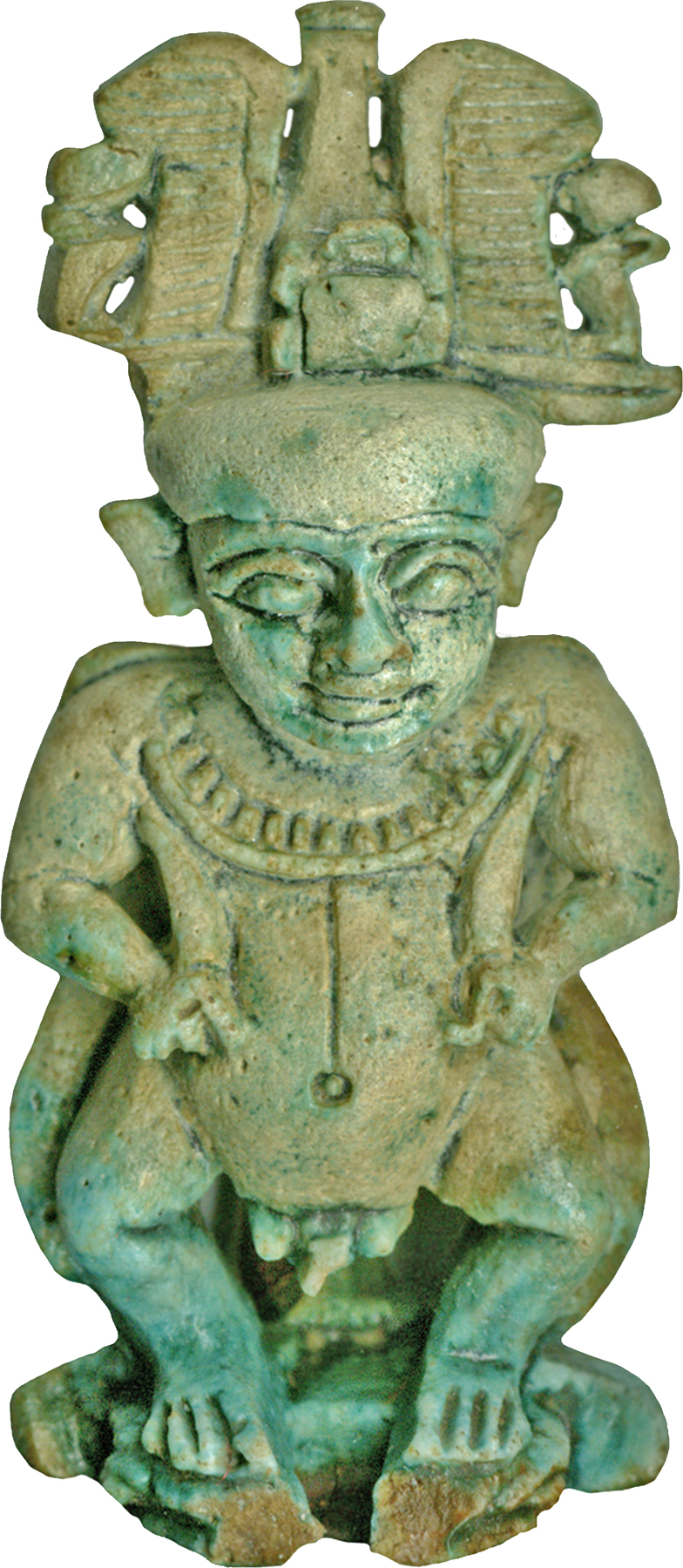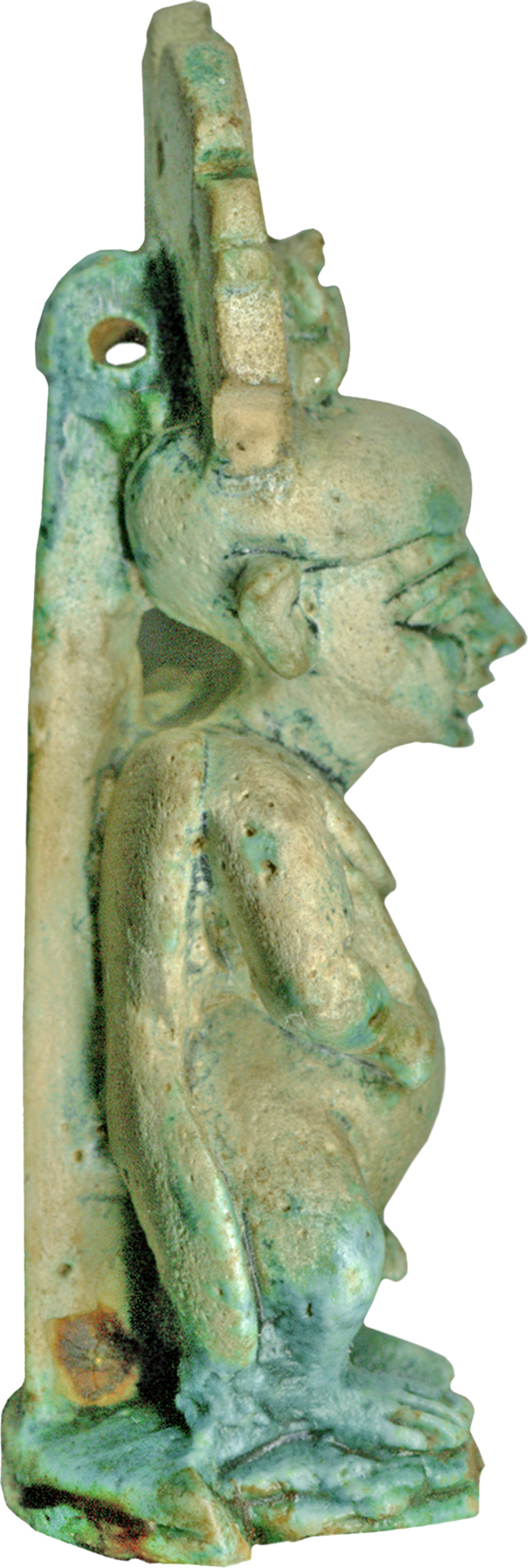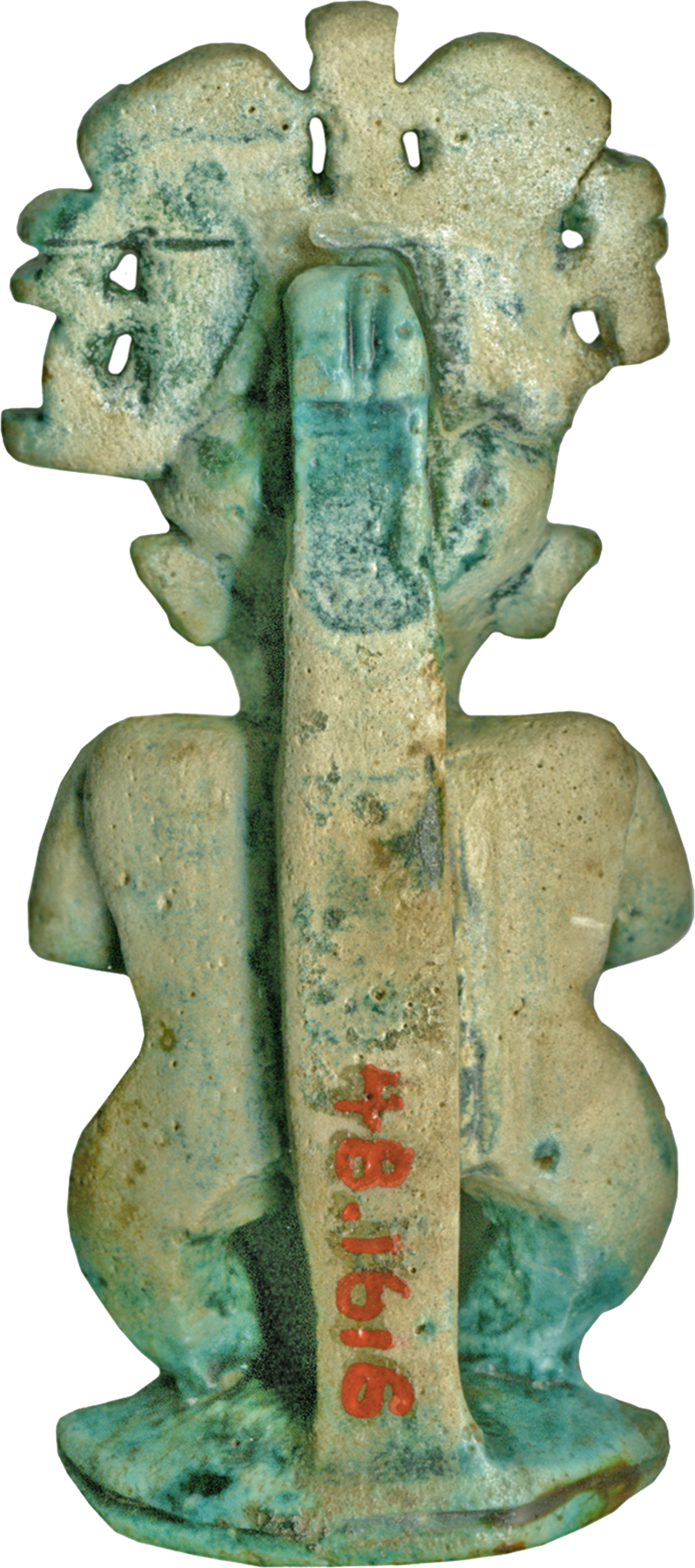Standing Pataikos
(Ancient Egypt and Nubia )
This dwarf-like, protective deity was very popular in ancient Egypt; amulets in the shape of this god were particularly popular from the Third Intermediate period. The Greek name Pataikos comes from a passage in the writings of Herodotus (ca. 5th century BCE), who used this term to describe a Phoenician protective dwarf-like image. The Egyptian Pataikos is a special manifestation of the creator god Ptah and the dwarf-like appearance symbolizes his magical power.
This Pataikos is standing on crocodiles and has knives in his hands. A large collar adorns his neck and upper chest. The crown is quite unusual for Pataikos; it is an atef crown (combination of the Upper Egyptian crown with flanking plumes) flanked by sun-disk-crowned snakes. A scarab, usually on top of the head of Pataikos, is instead placed in front of the lower center of the crown. Wings are attached behind the shoulders of the god. The back pillar is pierced to function as a loop for a pendant. This was probably made during the Ptolemaic Period.
Provenance
Provenance (from the French provenir, 'to come from/forth') is the chronology of the ownership, custody, or location of a historical object. Learn more about provenance at the Walters.
Henry Walters, Baltimore [date and mode of acquisition unknown]; Walters Art Museum, 1931, by bequest.
Exhibitions
| 2006-2007 | Daily Magic in Ancient Egypt. The Walters Art Museum, Baltimore. |
Geographies
Egypt (Place of Origin)
Measurements
H: 2 3/8 x W: 7/8 x D: 9/16 in. (6.1 x 2.3 x 1.5 cm)
Credit Line
Acquired by Henry Walters, by 1931
Location in Museum
Not on view
Accession Number
In libraries, galleries, museums, and archives, an accession number is a unique identifier assigned to each object in the collection.
In libraries, galleries, museums, and archives, an accession number is a unique identifier assigned to each object in the collection.
48.1616








